Content Area: Global Contemporary, 1980–Present
TIME PERIOD: 1980–PRESENT
ENDURING UNDERSTANDING: Art making is influenced by available materials and processes.
Learning Objective: Discuss how material, processes, and techniques influence the making of a work of art. (For example: Paik, Electronic Superhighway)
Essential Knowledge:
■Contemporary art goes beyond traditional art forms and acknowledges technological developments.
■Often artwork is presented in nontraditional ways: i.e., digital experiences, video performances, graffiti art, and online museums.
■Digital technology increases awareness about artistic issues around the world.
ENDURING UNDERSTANDING: Art and art making can be influenced by a variety of concerns including audience, function, and patron.
Learning Objective: Discuss how art can be influenced by audience, function, and/or patron. (For example: Gehry, Guggenheim Museum Bilbao)
Essential Knowledge:
■Diverse art forms take on contemporary issues.
■Cities seek iconic buildings as a way of establishing their profile. Computers aid in the development of architectural design.
■Artistic venues are more plentiful: i.e., museums, galleries, exhibitions, books, festivals, etc.
■Modern artists appropriate images from the past to put a new light on cultural values.
ENDURING UNDERSTANDING: Cultural interaction through war, trade, and travel can influence art and art making.
Learning Objective: Discuss how works of art are influenced by cultural interaction. (For example: El Anatsui, Old Man’s Cloth)
Essential Knowledge:
■Contemporary art is being produced globally. Areas of the world that were often neglected in terms of their modern artistic production are now being recognized as centers of productivity.
■Various social and political forces have contributed to a global artistic presence.
ENDURING UNDERSTANDING: The culture, beliefs, and physical settings of a region play an important role in the creation, subject matter, and siting of works of art.
Learning Objective: Discuss how the culture, beliefs, or physical setting can influence the making of a work of art. (For example: Salcedo, Shibboleth)
Essential Knowledge:
■The art world represents artists around the globe, regardless of race, gender, or sexual orientation. Art history theory has expanded to encompass diverse views.
ENDURING UNDERSTANDING: Art history is best understood through an evolving tradition of theories and interpretations.
Learning Objective: Discuss how works of art have had an evolving interpretation based on visual analysis and interdisciplinary evidence. (For example: Lin, Vietnam Veterans Memorial)
Essential Knowledge:
■Art history as a science continues to be shaped by theories, interpretations, and analyses applied to new art forms.
HISTORICAL BACKGROUND
The devastation of World War II formed the backdrop for much of the rest of the twentieth century. Far from solving the world’s problems, it just replaced the Fascist menace with smaller conflicts no less deadly in the world’s traditional hot spots. With the invention of television, global issues were brought into the living rooms of millions as never before. One disillusioning world problem after another—racism, the environment, weapons of mass destruction—has contributed to a tense atmosphere, even in parts of the world not physically touched by conflict. Artists are quick to pick up on social and political issues, using them as springboards to create artwork.
But not all is bleak in the contemporary world. The rapid growth of technology has brought great advances in medical science and everyday living. Inventions formerly beyond the realm of possibility, like home computers or cell phones, have turned into the necessities of modern life. New media have become fertile ground for artistic exploration. Artists exploit materials, like plastics, for their elastic properties. Video projections, computer graphics, sound installations, fiberglass products, and lasers are new technologies for artists to investigate. One challenge posed to the artist concerns how these media will be used in a way that will thoughtfully provoke the audience. Certainly the modern world has much to offer the artist.
MODERN ARCHITECTURE
Everything about architecture has changed since 1980, and most of the changes have been brought about by the computer. No longer are blueprints painstakingly drawn by hand to exacting specifications. Programs like AutoCAD and MicroStation not only assist in drawing plans, but also automatically check for errors. They also make feasible designs that heretofore existed only in the mind. Frank Gehry’s Guggenheim Museum Bilbao (Figure 29.1) is a good example of how computers can help architects render shapes and meaningful designs in an imaginative way.
New age technology has produced an array of products that make buildings lighter, cheaper, and more energy efficient than before. All these developments, however, come aligned with new challenges for architects. How can cost efficiency and expensive new technology be brought into a meaningful architectural plan? The resources are there for the future to explore.
One would be hard-pressed to find a modern building with pediments, Doric columns, or flying buttresses; historical associations have been downplayed in modern architecture. What exists is a proud display of technology: Innovative materials like titanium in Gehry’s work, or unusual shapes like the buildings of Hadid.
Dark interiors, as in Gothic or Romanesque buildings, are out. Natural light supplemented by artificial light is in. Domes presage a modern fascination, almost obsession, with glass and its properties.
Frank Gehry, Guggenheim Museum Bilbao, 1997, titanium, glass, and limestone, Bilbao, Spain (Figures 29.1a, and 29.1b)

Figure 29.1a: Frank Gehry, Guggenheim Museum Bilbao, 1997, titanium, glass, and limestone, Bilbao, Spain

Figure 29.1b: Detail of interior of Guggenheim Museum Bilbao
Form
■The building has swirling forms and shapes that contrast with the industrial landscape of Bilbao.
■From the river side, the building resembles a boat, referencing Bilbao’s past as a shipping and commercial center.
■The curving forms were designed by a computer software program called Catia.
■Fixing clips make a shallow dent in the titanium surface; it produces an effect of having a shimmering surface that changes according to atmospheric conditions.
■Curvilinear forms evoke the architecture of Borromini and the Italian Baroque in general (Figures 17.2a, 17.2b, 17.2c).
Function
■A modern art museum featuring contemporary art in a contemporary architectural setting.
■The work follows the tradition of the Guggenheim museums around the world, many also created by prominent architects in daring designs.
Context
■Frank Gehry is a Canadian-American architect based in Los Angeles.
■The revitalization of the port area of Bilbao is called the “Bilbao effect,” a reference to the impact a museum can have on a local economy.
Content Area Global Contemporary, Image 240
Web Source https://www.guggenheim-bilbao.eus/en/
■Cross-Cultural Comparisons for Essay Question 1: Curvilinear Forms
–Borromini, San Carlo alle Quattro Fontane (Figures 17.2a, 17.2b)
–Walls at Saqsa Waman (Figure 26.8c)
–Great Zimbabwe (Figures 27.1a, 27.1b)
Zaha Hadid, MAXXI National Museum of XXI Century Arts, 2009, glass, steel, and cement, Rome, Italy (Figures 29.2a and 29.2b)
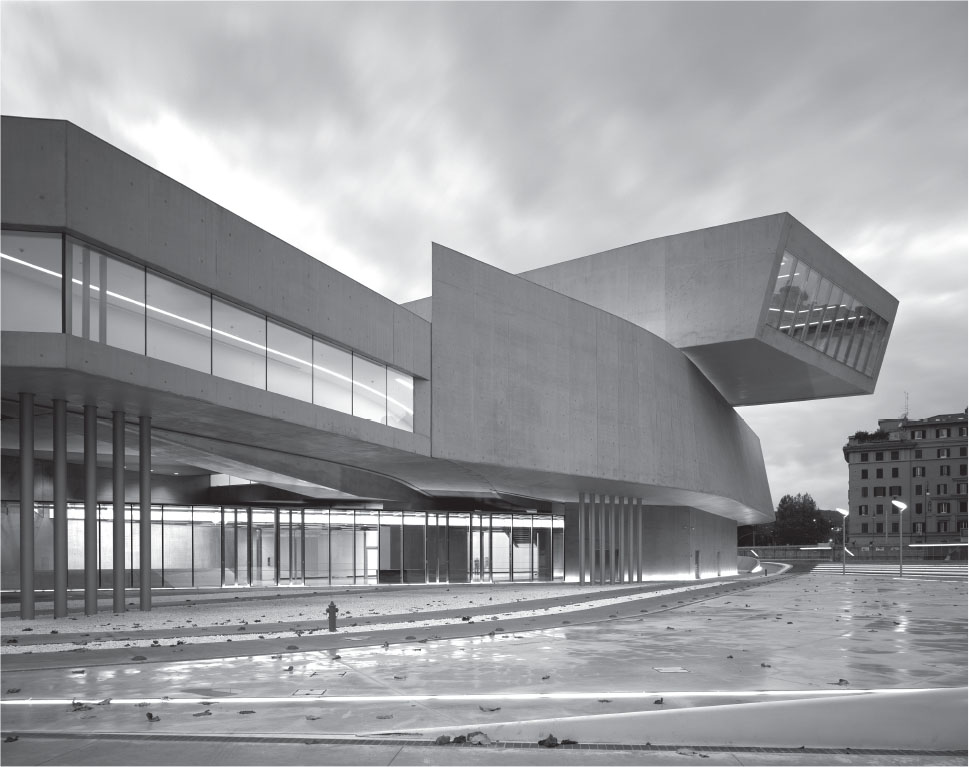
Figure 29.2a: Zaha Hadid, MAXXI National Museum of XXI Century Arts, 2009, glass, steel, and cement, Rome, Italy
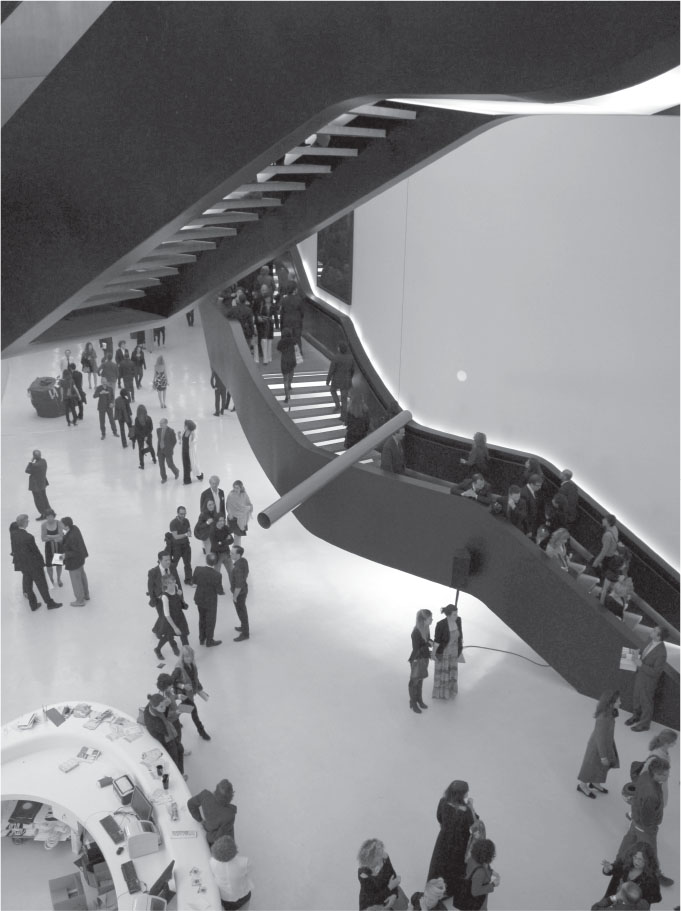
Figure 29.2b: Interior of MAXXI
Form
■Internal spaces are covered by a glass roof; natural light is admitted into the interior, filtered by louvered blinds.
■Walls flow and melt into one another, creating new and dynamic interior spaces.
■Constantly changing interior and exterior views.
■The transparent roof modulates natural light.
■Subtle modulations of color: grays, silvers, and whites contrast with blacks.
Function
■Two museums (MAXXI Art and MAXXI Architecture), a library, an auditorium, and a cafeteria.
■The complex specializes in art of the twenty-first century.
■The flowing form encourages various paths to understanding history rather than a single narrative.
Context
■Zaha Hadid was an Iraqi-born, British-based architect.
■The work references Roman concrete construction.
Content Area Global Contemporary, Image 249
Web Source http://www.fondazionemaxxi.it/en/
■Cross-Cultural Comparisons for Essay Question 1: Public Spaces
–Forum of Trajan (Figure 6.10a)
–Angkor Wat (Figures 23.8a, 23.8b, 23.8c, 23.8d)
–Forbidden City (Figures 24.2a, 24.2b, 24.2c, 24.2d)
MODERN PAINTING AND SCULPTURE
Oil on canvas used to be the preferred medium. In the 1950s, a new type of paint—acrylic—was developed to wide popular appeal. Acrylics take very little time to dry, unlike oils, which can take weeks or even months, and unlike watercolor, acrylics do not change color when they dry. However, acrylics crack with time much faster than other paints do. Contemporary artists who are working “for the ages” still prefer oils, although commercially available extenders can prolong the life of acrylics.
While traditional painting techniques are still popular, many modern artists have abandoned the canvas for the computer screen and have reached into cyberspace to create new forms and modes of representation. Computer programs make the process easier, bringing with them a dizzying array of applications and alternatives. The computer has revolutionized the creative spirit of fine art.
Marble carving is dead. All the great advantages to marble—its permanence, durability, and lustrous shine—have been cast into the dustbin of history. Few artists want to spend years studying marble carving in a world that will offer no commissions for laboring over an art form that is associated with the ancients and has seemingly nothing to offer beyond that. Marble is also unforgiving; once chipped, it cannot be repaired without showing the damage.
Modern forms of sculpture are faster to produce and even easier to reproduce. Unlike marble or bronze they come in a variety of textures, from the high-polish porcelains by Jeff Koons to the knotty fabrics of Magdalena Abakanowicz. Anything that can be molded, like beeswax, is experimented with to make a visceral impact.
On occasion, sculptors will combine objects into works of art, called assemblages. If the assemblages are large enough, they are called installations and can take up a whole room in a museum or gallery.
Christo and Jeanne-Claude, The Gates, 1979–2005, mixed-media installation, New York City (Figures 29.3a and 29.3b)
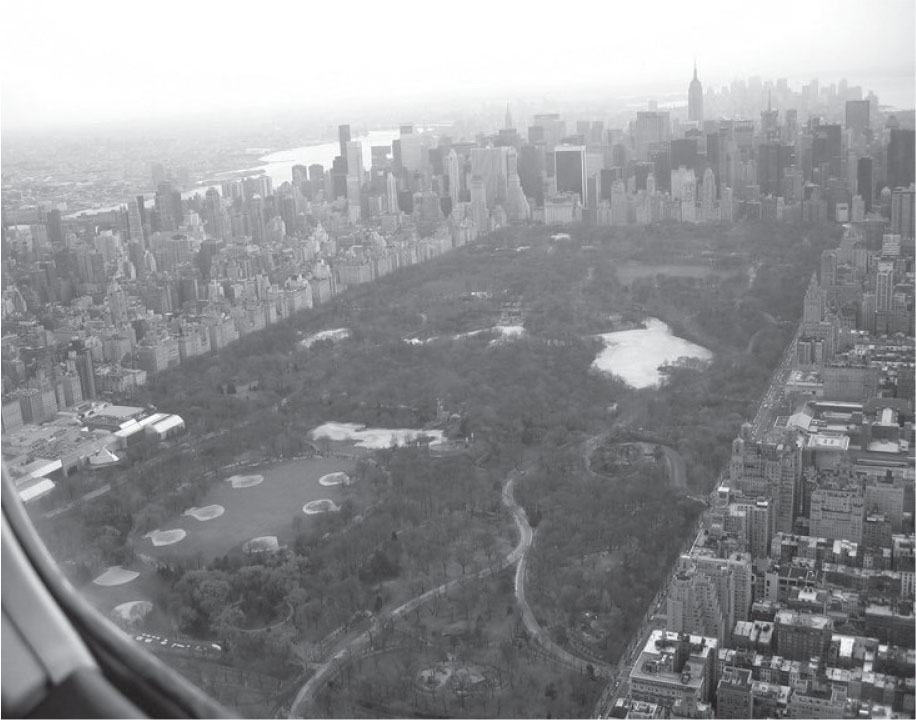
Figure 29.3a: Christo and Jeanne-Claude, The Gates, 1979–2005, mixed-media installation, New York City
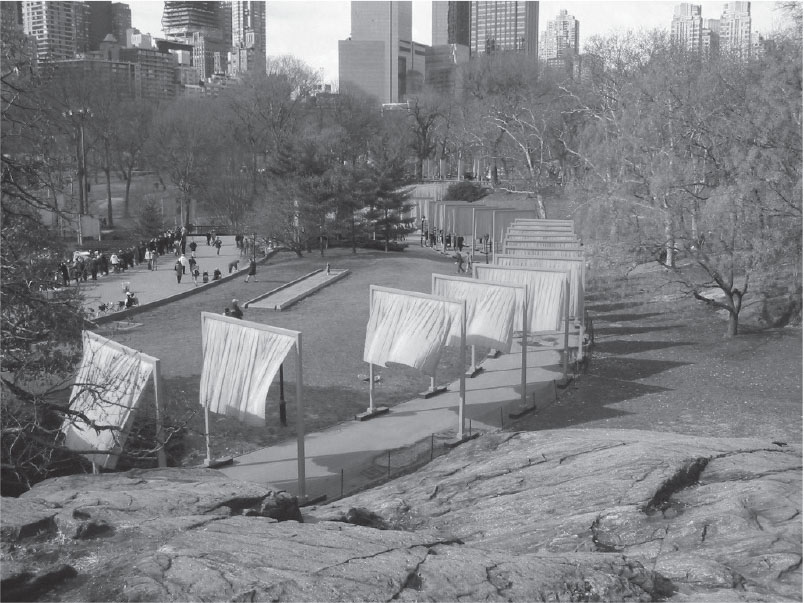
Figure 29.3b: Detail of The Gates
Form
■Installation of 7,503 “gates” of free-hanging saffron-colored fabric panels.
■The installation framed all the pathways in Central Park in New York City, a nineteenth-century park originally designed by Olmsted and Vaux.
■The work was mounted in the winter so the colors would have maximum impact; the trees were bare and the gates easily visible.
■The 16-foot-tall gates formed a continuous river of color.
■The work covered 23 miles of footpaths.
Context
■Christo is Bulgarian-born; Jean-Claude was of French descent, born in Morocco.
■The work was put on hold for many years, but installed a few years after 9/11.
■Temporary installation: 16 days.
■After the exhibition closed, the materials were recycled.
■Spectators walked through the gates to see ever-changing views of the park.
Content Area Global Contemporary, Image 224
Artists’ Website http://christojeanneclaude.net/
■Cross-Cultural Comparisons for Essay Question 1: Gateways
–Great Portal, Chartres (Figure 12.6)
–Todai-ji (Figure 25.1e)
–Forbidden City (Figures 24.2a, 24.2b, 24.2c, 24.2d)
Maya Lin, Vietnam Veterans Memorial, 1982, granite, Washington, D.C. (Figures 29.4a and 29.4b)
Form
■This memorial is a V-shaped war monument cut into the earth.
■The memorial contains the names of 60,000 casualties of the Vietnam War listed in the order they were killed or reported missing.
■The earliest names appear in the vortex and extend out to one end of the monument and begin again at the other end working toward the vortex; a symbolic circular association.
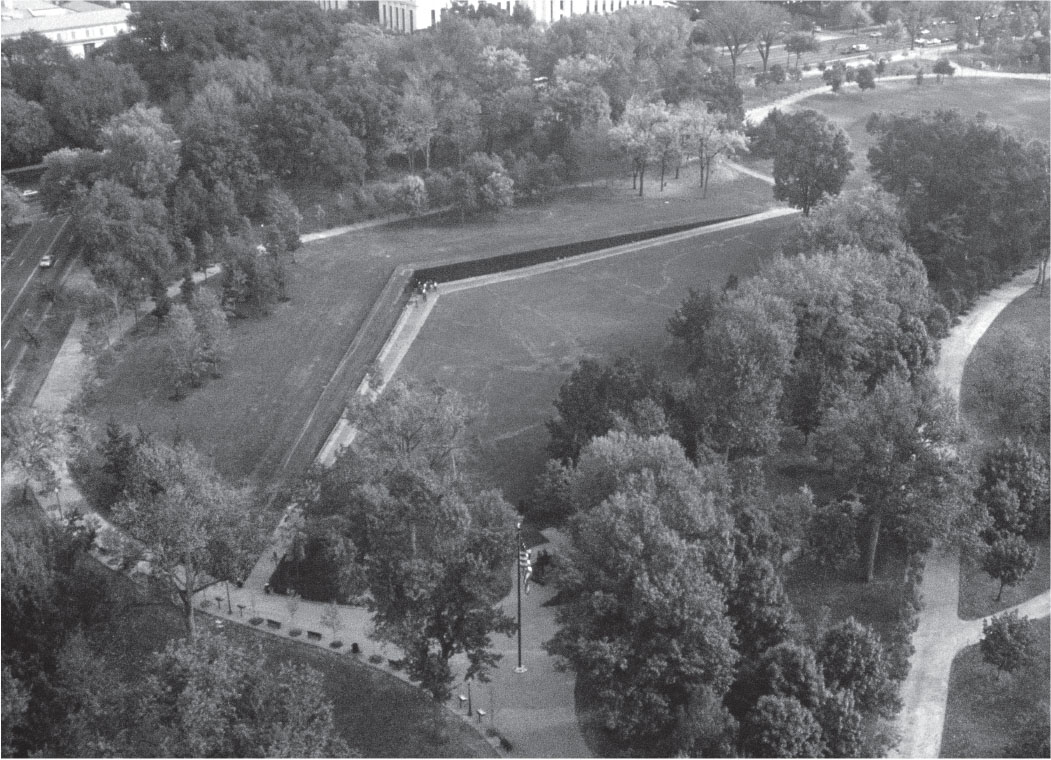
Figure 29.4a: Maya Lin, Vietnam Veterans Memorial, 1982, granite, Washington, D.C.

Figure 29.4b: Maya Lin, Vietnam Veterans Memorial, 1982, granite, Washington, D.C.
Function
■The war monument dedicated to the deceased and missing-in-action soldiers of the Vietnam War.
Materials
■Black granite, a highly reflective surface, is used so that viewers can see themselves in the names of the veterans.
Context
■Maya Lin is an Ohio-born Chinese-American.
■This was the winning design in an anonymous competition held to create a memorial on the mall in Washington, D.C.
■The work is not an overly political monument with a message, but a memorial to the deceased who sacrificed everything.
■One arm of the monument points to the Lincoln Memorial, the other to the Washington Monument, placing itself central to key figures in American history.
■It digs into the earth like a scar, a scar that heals but whose traces remain, a reflection of the impact of the war on the American consciousness.
■Strongly influenced by the Minimalist movement.
■Initially strongly criticized by those who wanted a more traditional war monument; later, a figural grouping was placed nearby.
Content Area Global Contemporary, Image 225
Artist’s Website http://www.mayalin.com/
■Cross-Cultural Comparisons for Essay Question 1: War and Reflection
–Goya, And There’s Nothing to Be Done (Figure 20.2)
–Oldenburg, Lipstick (Ascending) on Caterpillar Tracks (Figure 22.24)
–Delacroix, Liberty Leading the People (Figure 20.4)
Jean-Michel Basquiat, Horn Players, 1983, acrylic and oil paintstick three canvas panels, The Broad, Los Angeles, California (Figure 29.5)
Form
■Flattened, darkened background; flat patches of color; thick lines; text.
■Heads seem to float over outlined bodies and dissolve as the eye goes down the body.
■The focus is on contrast and juxtaposition, not on balance or scale.
■Some traditional forms: triptych, canvas, oil paint.
Content
■The painting glorifies African-American musicians; in flanking wings there is a salute to jazz musicians Charlie Parker and Dizzy Gillespie.
■The words painted onto the canvas are those attributed to the musicians (ornithology misspelled; reference to Charlie “the Bird” Parker).
■Words such as “soap” critique racism.
■Gillespie used meaningless words “DOH SHOO DE OBEE” in improvisational, or scat, singing.
Context
■Jean-Michel Basquiat was an artist born in Brooklyn, New York, of Puerto Rican and Haitian parents.
■The artist rebelled against his middle-class upbringing.
■The artist was influenced by graffiti art and street poetry, and in turn he influenced these art forms.
Content Area Global Contemporary, Image 226
Artist’s Website http://www.basquiat.com/
■Cross-Cultural Comparisons for Essay Question 1: Art and Words
–Bayeux Tapestry (Figure 11.7a, 11.7b)
–Folio from a Qu’ran (Figure 9.5)
–Code of Hammurabi (Figure 2.4a)

Figure 29.5: Jean-Michel Basquiat, Horn Players, 1983, acrylic and oil paintstick three canvas panels, The Broad, Los Angeles, California
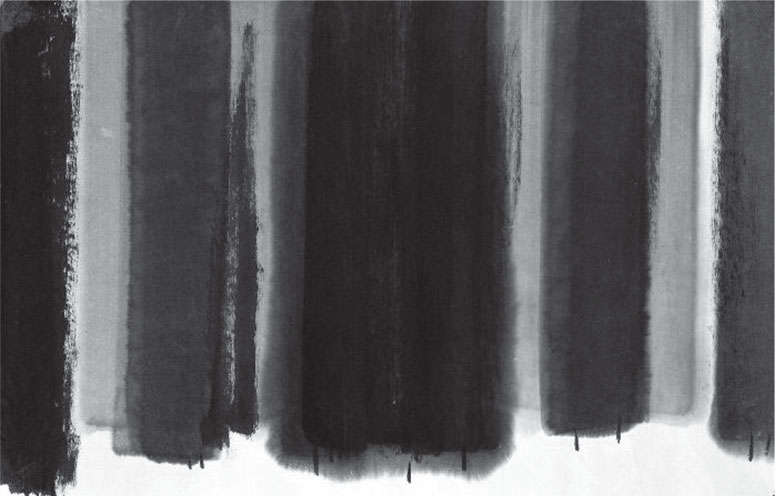
Figure 29.6: Song Su-nam, Summer Trees, 1983, ink on paper, British Museum, London
Song Su-nam, Summer Trees, 1983, ink on paper, British Museum, London (Figure 29.6)
Form
■Large vertical lines of various thickness.
■Subtle tonal variations of ink wash.
Context
■Song Su-nam was a Korean artist who used traditional ink on paper.
■The artist was one of the leaders of the Sumukhwa, a new type of ink brush painting in the 1980s.
■Ink painting is a traditional form of artistic expression in Korea; this movement revitalizes ink painting in a modern context.
■Inspired by Western abstraction.
Content Area Global Contemporary, Image 227
■Cross-Cultural Comparisons for Essay Question 1: Ink Technique
–Folio from a Qur’an (Figure 9.5)
–Bichitr, Jahangir Preferring a Sufi Shaikh to Kings (Figure 23.9)
–Bahram Gur Fights the Karg (Figure 9.8)
Magdalena Abakanowicz, Androgyne III, 1985, burlap, resin, wood, nails, and string, Metropolitan Museum of Art, New York (Figure 29.7)
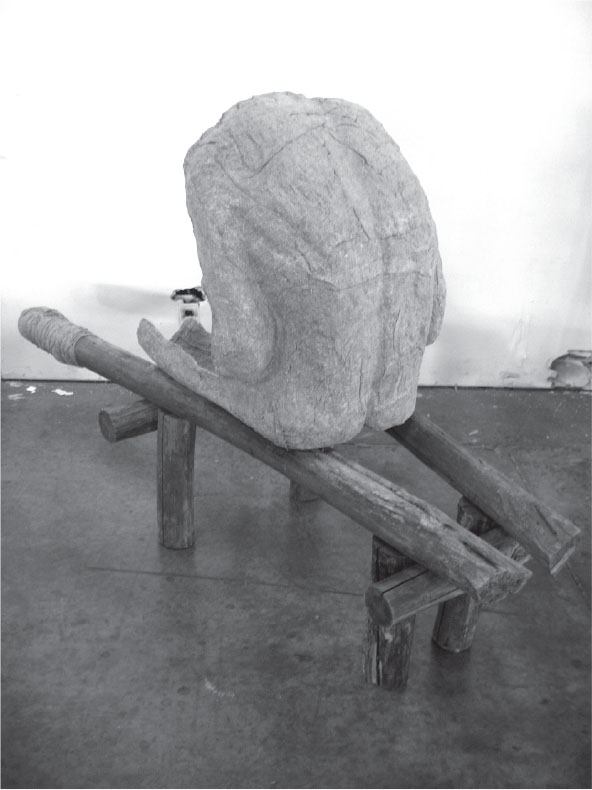
Figure 29.7: Magdalena Abakanowicz, Androgyne III, 1985, burlap, resin, wood, nails, and string, Metropolitan Museum of Art, New York
Form
■The figure sits on a low stretcher of wooden legs, substituting for human legs.
■The figure is hollowed out, just a shell.
■The figure is placed to be seen in the round: the complete back and the hollow front are visible.
■The pose suggests meditation and/or perseverance.
■Sexual characteristics are minimized to increase the universality of the figure; hence the title Androgyne, or an androgynous figure, one that is neither male nor female.
Materials
■The work is made of hardened fiber casts from plaster molds.
■The hardened fiber has the appearance of crinkled human skin set in earth tones.
Context
■Magdalena Abankanowicz was a Polish artist who endured World War II, the Nazi occupation of Poland, and Stalinist rule.
■Since 1974, the artist had been making similar figures, often without heads or arms, in large groups or singly.
Content Area Global Contemporary, Image 228
Web Source https://www.metmuseum.org/art/collection/search/484422
■Cross-Cultural Comparisons for Essay Question 1: Human Figure
–Tlatilco female figure (Figure 1.5)
–Lakshmana Temple detail (Figure 23.7b)
–Reliquary figure (byeri) (Figure 27.13)
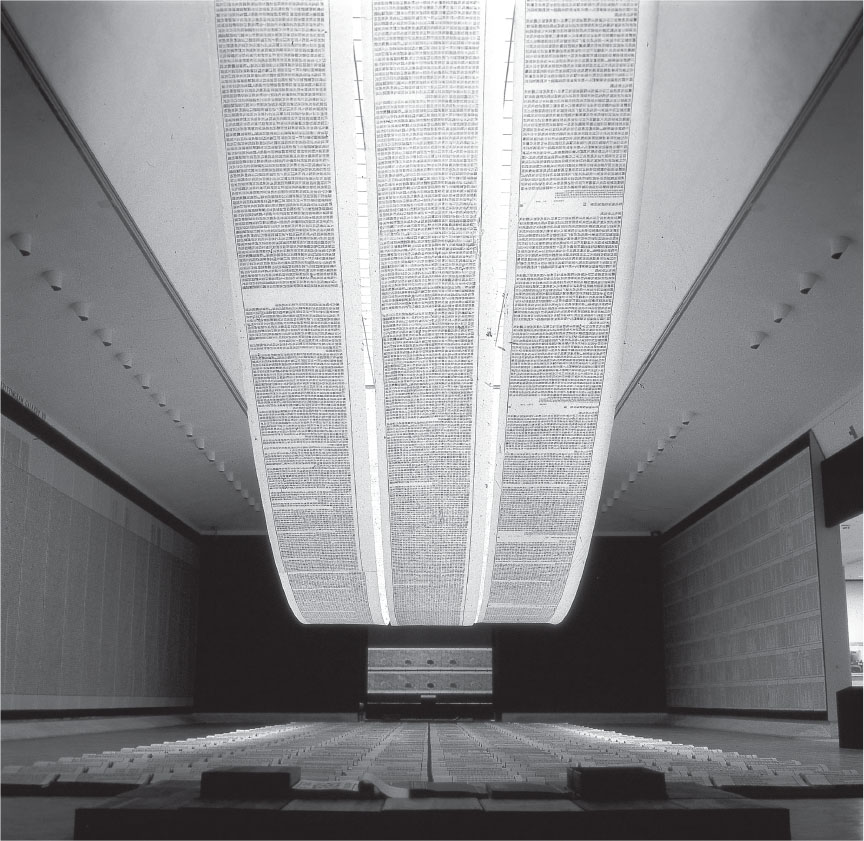
Figure 29.8: Xu Bing, A Book from the Sky, 1987–1991, mixed-media installation, Elvehjem Museum of Art, University of Wisconsin-Madison, Madison, Wisconsin
Xu Bing, A Book from the Sky, 1987–1991, mixed-media installation, Elvehjem Museum of Art, University of Wisconsin-Madison, Madison, Wisconsin (Figure 29.8)
Form
■The work references Chinese art forms: scrolls, screens, books, and paper.
■Four hundred handmade books are placed in rows on the ground.
■One walks beneath printed scrolls hanging from the ceiling.
■All of the Chinese characters are inventions of the artist and have no meaning.
■The artist uses traditional Asian wood-block techniques.
History
■Original title: “An Analyzed Reflection of the End of This Century.”
■Originally in the National Museum of Fine Arts in Beijing; filled a large exhibition space.
■The artist lost favor with the Communist government over this work.
■Mounted at many venues in the West afterward.
Context
■Xu Bing is a Chinese-born artist and U.S. resident.
■The artist was trained in the propagandistic socialist realist style; that background led to his critique of power in works such as this one.
■Criticized as “bourgeois liberation;” it was claimed that its meaninglessness hid secret subversions; others interpret the meaningless characters as reflecting the meaningless words found in political doublespeak.
Content Area Global Contemporary, Image 229
Artist’s Website http://www.xubing.com/
■Cross-Cultural Comparisons for Essay Question 1: Book Making
–Book of Lindisfarne (Figures 10.2a, 10.2b, 10.2c)
–Golden Haggadah (Figures 12.10a, 12.10b, 12.10c)
–Frontispiece of the Codex Mendoza (Figure 18.1)

Figure 29.9: Jeff Koons, Pink Panther, 1988, glazed porcelain, Museum of Modern Art, New York
Jeff Koons, Pink Panther, 1988, glazed porcelain, Museum of Modern Art, New York (Figure 29.9)
Form
■Artificially idealized female form: overly yellow hair, bright red lips, large breasts, pronounced red fingernails; overtly fake look.
■Life-size.
Content
■The woman is Jayne Mansfield (1933–1967), a popular screen star and a Playboy playmate.
■Pink Panther, a cartoon character, generally seen as an animated figure.
■The panther has a tender and delicate gesture around Jayne Mansfield.
Context
■Jeff Koons is a Pennsylvania-born artist, working in New York.
■This work is a commentary on celebrity romance, sexuality, commercialism, stereotypes, pop culture, and sentimentality.
■The work is kitsch but is made of “high art” porcelain.
■Creates a permanent reality out of something that is ephemeral and never meant to be exhibited.
■Part of a series called The Banality at a show in the Sonnenbend Gallery in New York in 1988.
Content Area Global Contemporary, Image 230
Artist’s Website http://www.jeffkoons.com/
■Cross-Cultural Comparisons for Essay Question 1: Porcelain and Ceramic
–The David Vases (Figure 24.11)
–Apollo from Veii (Figure 5.5)
–Terra cotta fragment (Figure 1.6)

Figure 29.10: Cindy Sherman, Untitled #228 from the History Portraits series, 1990, photograph, Museum of Modern Art, New York
Cindy Sherman, Untitled #228 from the History Portraits series, 1990, photograph, Museum of Modern Art, New York (Figure 29.10)
Content
■This image explores the theme of the Old Testament figure Judith decapitating Holofernes (from the Book of Judith).
■The richness of the costuming and the setting acts as a commentary on late-nineteenth-century versions of this subject.
■Richly decorative drapes hang behind the figure.
■Judith lacks any emotional attachment to the murder that has taken place.
■Judith uses her sexuality to attract and slay Holofernes.
■Holofernes appears masklike, alert, and nearly bloodless.
■Red garments denote lust and blood.
Context
■Cindy Sherman is a New Jersey–born American artist.
■The artist appears as the photographer, subject, costumer, hairdresser, and makeup artist in each work.
■The artist expresses the artifice of art by revealing the props used in the process.
■The artist’s work comments on gender, identity, society, and class distinction.
■The artist uses old master paintings as a starting point, but the works are not derivative.
■This series sheds a modern light on the great masters in this case Italian Baroque.
Content Area Global Contemporary, Image 231
Artist’s Website http://www.cindysherman.com/
■Cross-Cultural Comparisons for Essay Question 1: References to the Past
–Jefferson, Monticello (Figures 19.5a, 19.5b)
–Ringgold, Dancing at the Louvre (Figure 29.11)
–Shonibare, The Swing (after Fragonard) (Figure 29.22)

Figure 29.11: Faith Ringgold, Dancing at the Louvre from the series The French Collection, Part I; #1, 1991, acrylic on canvas, tie-dyed, pieced fabric borders, Private Collection
Faith Ringgold, Dancing at the Louvre from the series The French Collection, Part I; #1, 1991, acrylic on canvas, tie-dyed, pieced fabric borders, Private Collection (Figure 29.11)
Materials
■The artist uses the American slave art form of the quilt to create her works.
■Quilts were originally meant to be both beautiful and useful—works of applied art.
■These quilts are not meant to be useful.
■Quilting is a traditionally female art form.
■The artist combines the traditional use of oil paint with the quilting technique.
Content
■Figures in Ringgold’s works often act out a history that might never have taken place, but that the artist would have liked to have taken place.
■The artist created a character named Willia Marie Simone, a young black artist who moves to Paris. She takes her friend and three daughters to the Louvre museum and dances in front of three paintings by Leonardo da Vinci.
■The story is spelled out in text written on the borders of the quilt.
■This is the first of twelve quilts in a series.
Context
■Faith Ringgold is a New York-born, African-American artist.
■The quilt has a narrative element.
■Feminist and racial issues dominate her work.
■Her works often reflect her struggle for success in an art world dominated by males working in the European tradition.
Content Area Global Contemporary, Image 232
Artist’s Website http://www.faithringgold.com/
■Cross-Cultural Comparisons for Essay Question 1: Woven Arts
–Bandolier bag (Figure 26.11)
–Hiapo (Figure 28.6)
–The Bayeux Tapestry (Figures 11.7a, 11.7b)
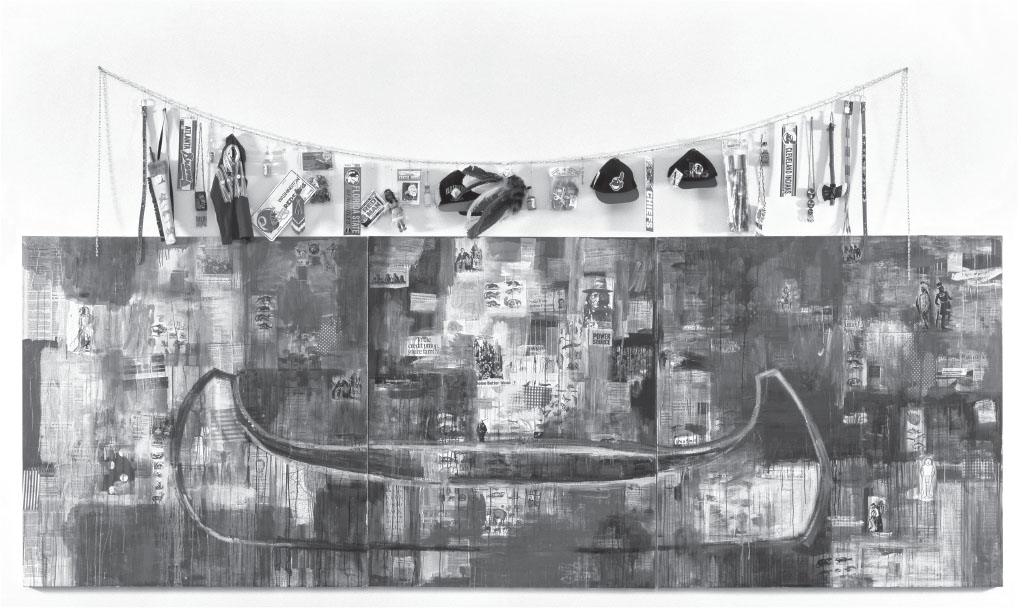
Figure 29.12: Jaune Quick-to-See-Smith, Trade (Gifts for Trading Land with White People), 1992, oil and mixed-media on canvas, Chrysler Museum of Art, Norfolk
Jaune Quick-to-See-Smith, Trade (Gifts for Trading Land with White People), 1992, oil and mixed-media on canvas, Chrysler Museum of Art, Norfolk (Figure 29.12)
Form
■This work is a combination of collage elements and abstract expressionist brushwork.
■Newspaper clippings and images of conquest are placed over a large dominant canoe.
■The red paint is symbolic of shedding of American Indian blood.
Content
■The array of objects sardonically represents Indian culture in the eyes of Europeans: sports teams, Indian-style knickknacks such as toy tomahawks, dolls, and arrows.
■A large canoe floats over the scene.
Context
■Jaune Quick-to-See Smith is a member of the Salish and Kootenai American Indian tribes of the Flathead Nation.
■The work was meant as the “Quincentenary Non-Celebration” of European occupation of North America (1492–1992).
■American Indian social issues caused by European occupation are stressed: poverty, unemployment, disease, alcoholism.
■Title Trade references events in American Indian history such as Manhattan being sold to the Dutch in 1626 for $24. Even if this story is apocryphal, it does highlight a history of “trade” in which Indians have been taken advantage of.
Content Area Global Contemporary, Image 233
Web Source http://jaunequick-to-seesmith.com/
■Cross-Cultural Comparisons for Essay Question 1: Multimedia Works and Installations
–Paik, Electronic Superhighway (Figure 29.17)
–Osorio, No Crying Allowed in the Barbershop (Figure 29.15a)
–Shonibare, The Swing (after Fragonard) (Figure 29.22)
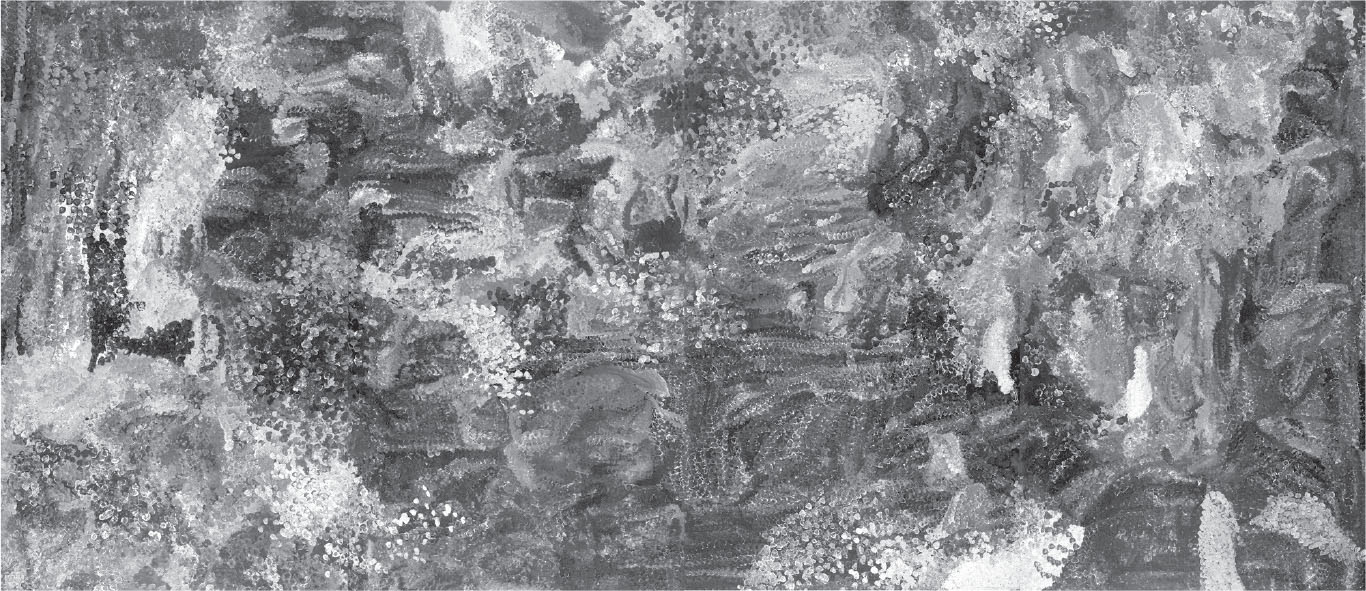
Figure 29.13: Emily Kame Kngwarreye, Earth’s Creation, 1994, synthetic polymer, paint on canvas, Private Collection
Emily Kame Kngwarreye, Earth’s Creation, 1994, synthetic polymer, paint on canvas, Private Collection (Figure 29.13)
Form
■The artist employed the dump-dot technique, which involves pounding paint onto a canvas with a brush to create layers with a sense of color and movement; related to “dream time” painting in Australia.
■This work is part of a larger suite of paintings.
Content
■The work references the color and lushness of the “green time” in Australia after it rains and the Outback flourishes.
Context
■Emily Kame Kngwarrere was an Australian aborigine artist.
■The artist was largely self-taught and began her career doing ceremonial painting.
■The artist was influenced by European abstraction of the mid-twentieth century.
Content Area Global Contemporary, Image 234
Web Source http://nga.gov.au/exhibitions/Kngwarreye/index.html
■Cross-Cultural Comparisons for Essay Question 1: Landscape
–Fan Kuan, Travelers among Mountains and Streams (Figure 24.5)
–Cézanne, Mont Sainte-Victoire (Figure 21.10)
–Cole, Oxbow (Figure 20.6)
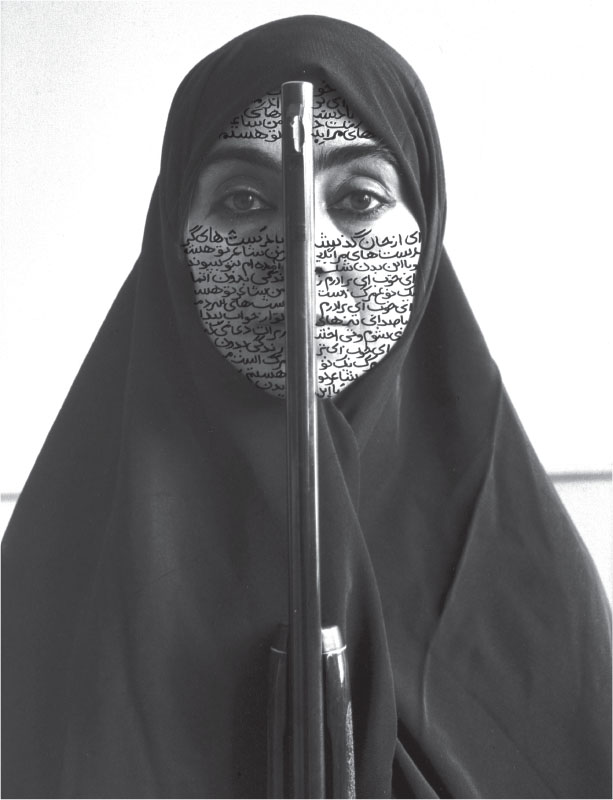
Figure 29.14: Shirin Neshat, photo by Cynthia Preston, Rebellious Silence, from the Women of Allah series, 1994, ink on photograph, Barbara Gladstone Gallery, New York
Shirin Neshat, photo by Cynthia Preston, Rebellious Silence, from the Women of Allah series, 1994, ink on photograph, Barbara Gladstone Gallery, New York (Figure 29.14)
Form and Content
■The poem written on the face is in Farsi, the Persian language; the poem expresses piety.
■The poem is by an Iranian woman who writes poetry on gender issues.
■The gun divides the body into a darker and a lighter side.
■The gun adds a note of ominous tension in the work.
■The work expresses the artist’s duality as both Iranian and American.
Materials
■Black and white photograph.
Context
■Shirin Neshat is an Iranian-born artist, raised in the United States.
■Chador: a type of outer garment, like a cloak, that allows only the face and hands of Iranian women to be seen.
■The chador keeps women’s bodies from being seen as sexual objects.
■Westerners could view the work as an expression of female oppression.
■Iranians could view the work as an image of an obedient, right-minded woman who is ready to die defending her faith and customs.
■The work contrasts with stereotypical Western depictions of exotic female nudes in opulent surroundings (cf. Figure 20.3).
Content Area Global Contemporary, Image 235
Artist’s Website http://www.gladstonegallery.com/artist/shirin-neshat/#&panel1-1
■Cross-Cultural Comparisons for Essay Question 1: Portraits
–Portait of Sin Sukju (Figure 24.6)
–Head of a Roman patrician (Figure 6.14)
–Vigée Le Brun, Self-Portrait (Figure 19.2)

Figure 29.15a: Pepón Osorio, En la Barberia no se Llora (No Crying Allowed in the Barbershop), 1994, mixed-media installation, Collection of the Museo de Arte de Puerto Rico, San Juan, Puerto Rico

Figure 29.15b: Alternate view of Figure 29.15a
Pepón Osorio, En la Barberia no se Llora (No Crying Allowed in the Barbershop), 1994, mixed media installation, Collection of the Museo de Arte de Puerto Rico, San Juan, Puerto Rico (Figures 29.15a and 29.15b)
Form and Content
■This is a large installation recreating the center of Latino male culture: the barbershop.
■The interior of a barbershop in which “no crying is allowed”—a masculine attribute.
■Photos of Latino men on the walls.
■Video screens on the headrests depict men playing, a baby being circumcised, and men crying.
■Appropriately tacky and grimy setting.
Context
■Pepon Osario is a Puerto Rican–born artist living in New York (called a Nuyorican).
■Kitsch items are used everywhere as symbols of consumer culture.
■Originally a temporary work constructed in a neighborhood building, not in a museum.
■This work challenges the viewer to question issues of identity, masculinity, culture, and attitudes.
Content Area Global Contemporary, Image 236
Web Source http://www.art21.org/artists/pepon-osorio
■Cross-Cultural Comparisons for Essay Question 1: Gender Identification
–Veranda post (Figure 27.14)
–Delacroix, Liberty Leading the People (Figure 20.4)
–Hogarth, The Tête à Tête (Figure 19.3)
Michel Tuffery, Pisupo Lua Afe (Corned Beef 2000), 1994, mixed media, Museum of New Zealand, Wellington, New Zealand (Figure 29.16)
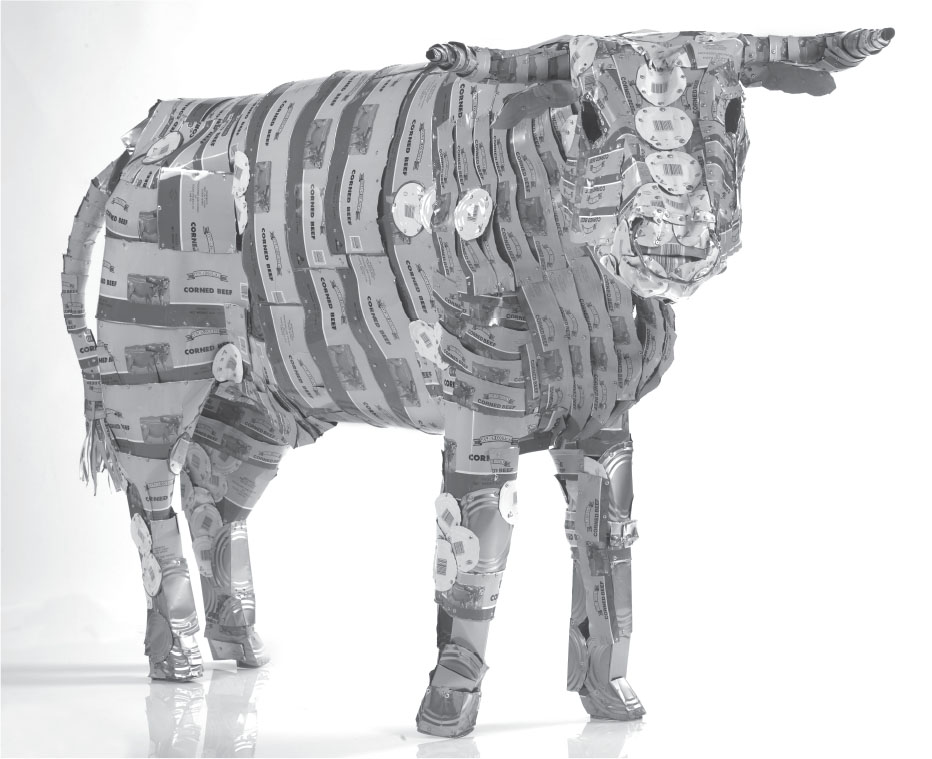
Figure 29.16: Michel Tuffery, Pisupo Lua Afe (Corned Beef 2000), 1994, mixed media, Museum of New Zealand, Wellington, New Zealand
Form
■Life-size sculpture of a bull made from flattened cans of corned beef.
■Two motorized bulls often engage in multimedia performance art called The Challenge.
■There are small concealed wheels at the feet for ease of movement.
Context
■Michel Tuffery was born in New Zealand of Samoan, Cook Islands, and Tahitian descent.
■The artist is interested in exploring aspects of his Polynesian heritage in a modern context.
■Canned corned beef is a favorite food in Polynesia; exported from New Zealand.
■Canned meat (pisupo, a Samoan language variant of “pea soup,” the first canned food in the Pacific) is given as a gift on special occasions in Polynesia.
■However, canned meat has been a major contributor to Polynesian obesity.
■The introduction of canned meat caused a fall in traditional cultural skills of fishing, cooking, and agriculture.
■The artist introduces a tone of irony in that the cow is made of hundreds of opened cans of cow meat.
■The theme of recycling is emphasized by the reuse of these cans.
Content Area Global Contemporary, Image 237
Artist’s Website http://www.micheltuffery.co.nz/
■Cross-Cultural Comparisons for Essay Question 1: Animals in Art
–Matisse, Goldfish (Figure 22.1)
–Bahram Gur Fights the Karg (Figure 9.8)
–Lascaux Caves (Figure 1.8)
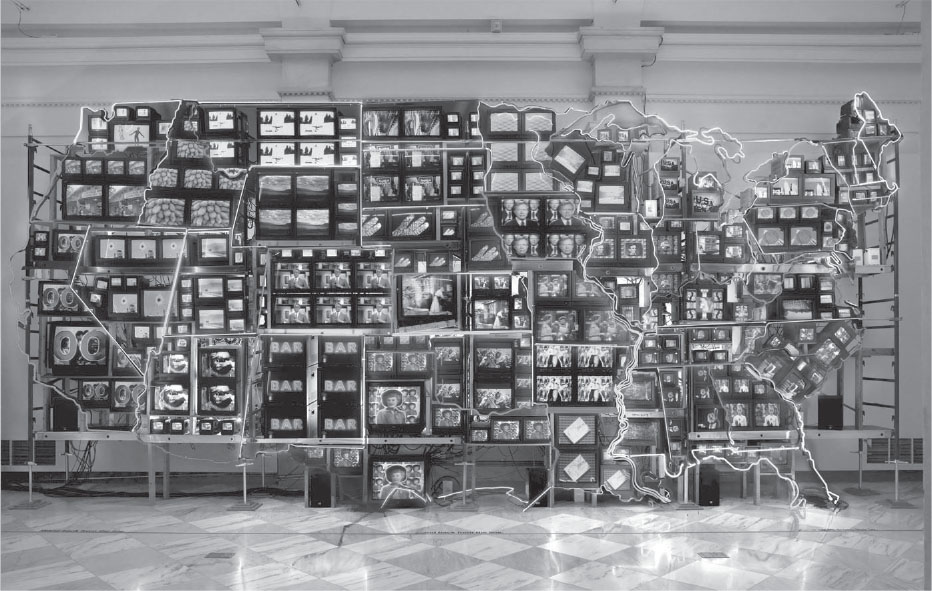
Figure 29.17: Nam June Paik, Electronic Superhighway, 1995, mixed-media installation, Smithsonian American Art Museum
Nam June Paik, Electronic Superhighway, 1995, mixed-media installation (49-channel closed-circuit video installation, neon, steel, and electronic components), Smithsonian American Art Museum (Figure 29.17)
Form
■Neon lighting outlines 50 states and the District of Columbia (Alaska and Hawaii are on the side walls).
■Each state has a separate video feed; hundreds of television sets and 50 separate DVD players.
■Themes associated with each state play on the state’s screen; for example, the musical Oklahoma! plays on the Oklahoma screen.
■A camera is turned on the spectator and its TV feed appears on one of the monitors; it turns the spectator into a participant in the artwork.
Context
■Nam June Pail was a Korean-born artist who lived in New York City.
■Paik was intrigued by maps and travel:
–Neon outlines symbolize multicolored maps of each state.
–Neon symbolizes motel and restaurant signs.
–Fascination with the interstate highway system.
■The constant blur of so many video clips at the same time can lead to “information overload.”
■Paik is considered the father of video art.
Content Area Global Contemporary, Image 238
Web Source http://americanart.si.edu/exhibitions/paik
■Cross-Cultural Comparisons for Essay Question 1: New Media for Its Time
–Daguerre, Still Life in Studio (Figure 20.8)
–The Colosseum (Figures 6.8a, 6.8b)
–Cranach, Allegory of Law and Grace (Figure 14.5)
Bill Viola, The Crossing, 1996, video and sound installation (Figures 29.18a and 29.18b)
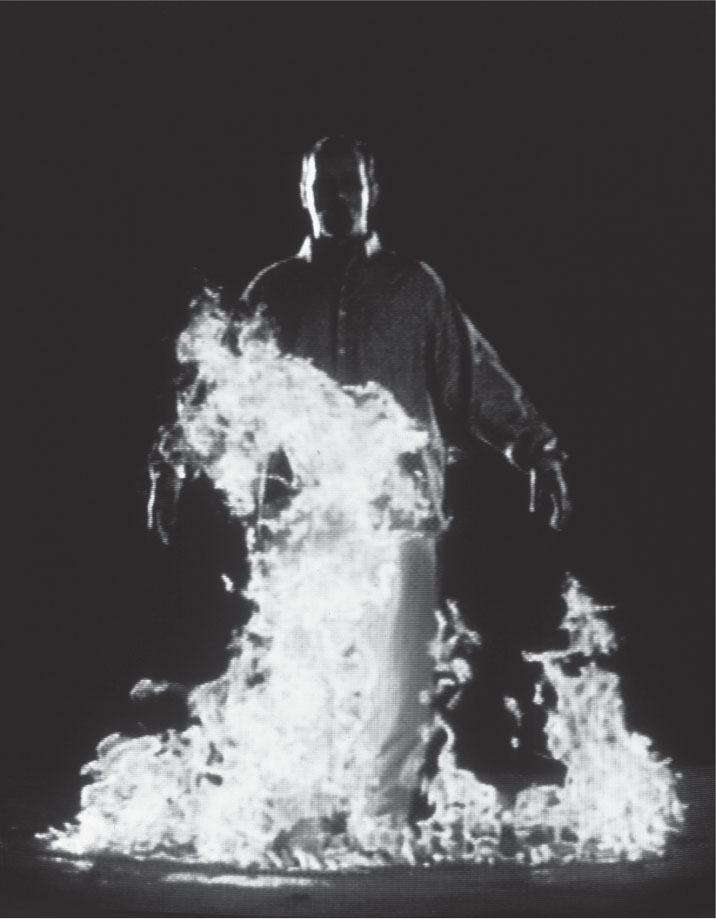
Figure 29.18a: Bill Viola, The Crossing, 1996, video and sound installation

Figure 29.18b: Bill Viola, The Crossing
Form and Content
■Room dimensions: 16 × 27.5 × 57 feet.
■Performer: Phil Esposito.
■Photo: Kira Perov.
■These video installations are total environments.
■Two channels of color video project from opposite sides of large dark gallery onto two large, back-to-back screens suspended from the ceiling and secured on the floor.
■Four channels of amplified stereo sound come from four speakers.
■There are two freestanding video screens that show a double-sided projection.
–Fire: flames consume the figure of a man, beginning at his feet.
•A figure approaches from a long distance. As he stops, a small flame appears at his feet and spreads rapidly to engulf him in a roaring fire. When it subsides, the man is gone.
–Water: a man walks toward the viewer and water falls from above.
•Similar to the fire scene, when the figure stops, a stream of water begins to pour upon his head. It quickly turns into a raging torrent, inundating the man. When the water slows, the man is gone.
■The figures walk in extremely slow motion.
Context
■Bill Viola is a Queens, New York–born artist.
■The artist promotes video as an art form.
■The work shows actions that repeat again and again.
■The artist is interested in sense perceptions.
■There is an implied cycle of purification and destruction.
■Filmed at high speed, but sequences are played back at super slow motion.
■Evokes Eastern and Western spiritual traditions: Zen Buddhism, Islamic Sufism, Christian mysticism.
■Requires the viewer to remain still and concentrate.
Content Area Global Contemporary, Image 239
Artist’s Website http://www.billviola.com/
■Cross-Cultural Comparisons for Essay Question 1: Motion
–Muybridge, The Horse in Motion (Figure 21.5)
–Winged Victory of Samothrace (Figure 4.8)
–Presentation of Fijian mats and tapa cloths to Queen Elizabeth II (Figure 28.10)
Mariko Mori, Pure Land, 1998, color photograph on glass, Los Angeles County Museum of Art, Los Angeles, California (Figure 29.19)
Content
■Mori herself appears as if in a vision in the guise of the Heian deity, Kichijōten.
■Kichijōten is the essence of beauty and the harbinger of prosperity and happiness.
■She holds a wish-granting jewel, a nyoi hōju, which has the power to deny evil and fulfill wishes.
■The jewel symbolizes Buddha’s universal mind.
■Animated figures of lighthearted aliens play musical instruments on clouds.
■A lotus blossom floats on water and symbolizes purity and rebirth into paradise.
■Set in a landscape evoking the Dead Sea, a place of extremely high salinity: salt seen as an agent of purification.
Context
■Mariko Mori is a Japanese artist.
■Her work shows the merging of consumer entertainment fantasies with traditional Japanese imagery.
■The artist uses a creative interpretation of traditional Japanese art forms.
Content Area Global Contemporary, Image 241
Web Source http://www.skny.com/artists/mariko-mori
■Cross-Cultural Comparisons for Essay Question 1: Photography
–Daguerre, Still Life in Studio (Figure 20.8)
–Muybridge, The Horse in Motion (Figure 21.5)
–Stieglitz, The Steerage (Figure 22.8)

Figure 29.19: Mariko Mori, Pure Land, 1998, color photograph on glass, Los Angeles County Museum of Art, Los Angeles, California
Kiki Smith, Lying with the Wolf, 2001, ink and pencil on paper, Centre Pompidou, Paris (Figure 29.20)
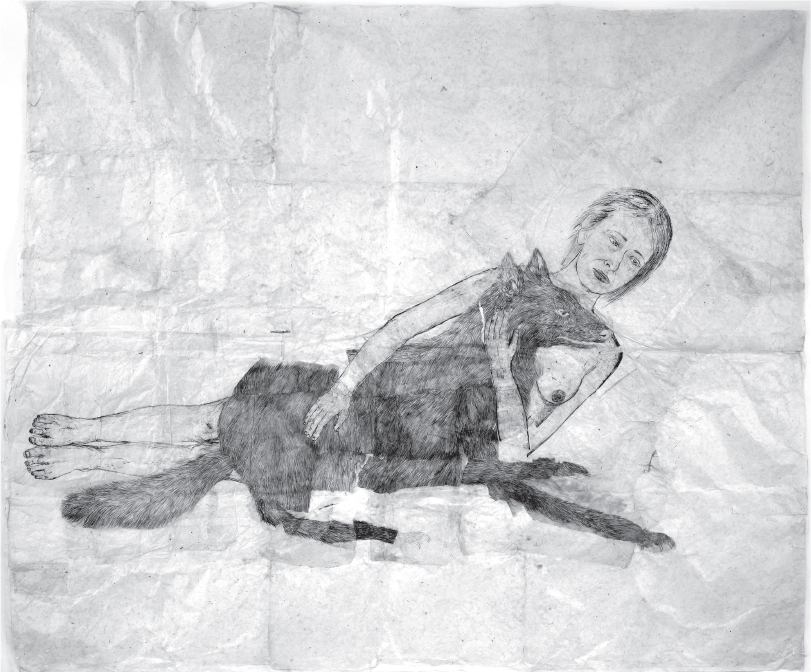
Figure 29.20: Kiki Smith, Lying with the Wolf, 2001, ink and pencil on paper, Centre Pompidou, Paris
Form
■This is a large, wrinkled drawing pinned to a wall; reminiscent of a tablecloth or a bedsheet.
Context
■Kiki Smith is an American artist who was born in Germany and lives in New York City.
■A theme of Smith’s work is the human body; this is a nude female figure.
■Female strength is emphasized in the woman lying down with the wild beast.
■The wolf seems tamed by the woman’s embrace.
■The wolf is traditionally seen as an evil or dangerous symbol, but not here.
Content Area Global Contemporary, Image 242
Web Source http://www.pacegallery.com/artists/442/kiki-smith
■Cross-Cultural Comparisons for Essay Question 1: Stereotypes
–Osorio, No Crying Allowed in the Barbershop (Figure 29.15a)
–Salcedo, Shibboleth (Figure 29.26)
–Lawrence, The Migration of the Negro, Panel no. 49 (Figure 22.19)
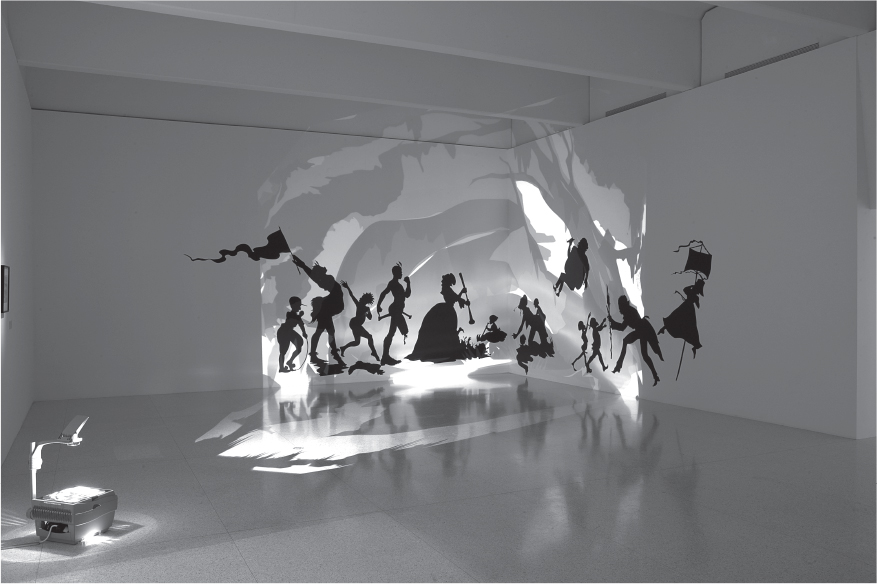
Figure 29.21: Kara Walker, Darkytown Rebellion, 2001, cut paper and projection on wall, Collection Musée d’Art Moderne Grand-Duc Jean, Luxembourg
Kara Walker, Darkytown Rebellion, 2001, cut paper and projection on wall, Collection Musée d’Art Moderne Grand-Duc Jean, Luxembourg (Figure 29.21)
Technique
■The artist draws images with a greasy white pencil or soft pastel crayon on large pieces of black paper and then cuts the paper with a knife.
■Images are then adhered to a gallery wall with wax.
■The artist uses traditional silhouette forms.
■Overhead projectors throw colored light onto the walls, ceilings, and floor.
■Cast shadows of the viewer’s body mingle with the black paper images.
Context
■Kara Walker is a California-born, New York–based, African-American artist.
■The work explores themes of African-Americans in the antebellum South: a teenager holds a flag that resembles a colonial ship sail; one man has his leg cut off; a woman is caring for newborns.
■The work explores how stereotypes and caricatures of African-Americans have been presented.
■Inspired by an anonymous landscape called “Darkytown”; it was the artist’s invention to have the figures in rebellion.
■This is not a recreation of an historical event, but a commentary on history as it has been presented in the past and the present.
■The viewer interacts with the work, walking around it, engaging in elements of it; the viewer is part of the history of the piece.
Content Area Global Contemporary, Image 243
Web Source http://www.art21.org/artists/kara-walker
■Cross-Cultural Comparisons for Essay Question 1: Wall Surfaces
–Lascaux Caves, Great Hall of the Bulls (Figure 1.8)
–Tomb of the Triclinium (Figure 5.3)
–Michelangelo, Sistine Chapel ceiling (Figure 16.2a)
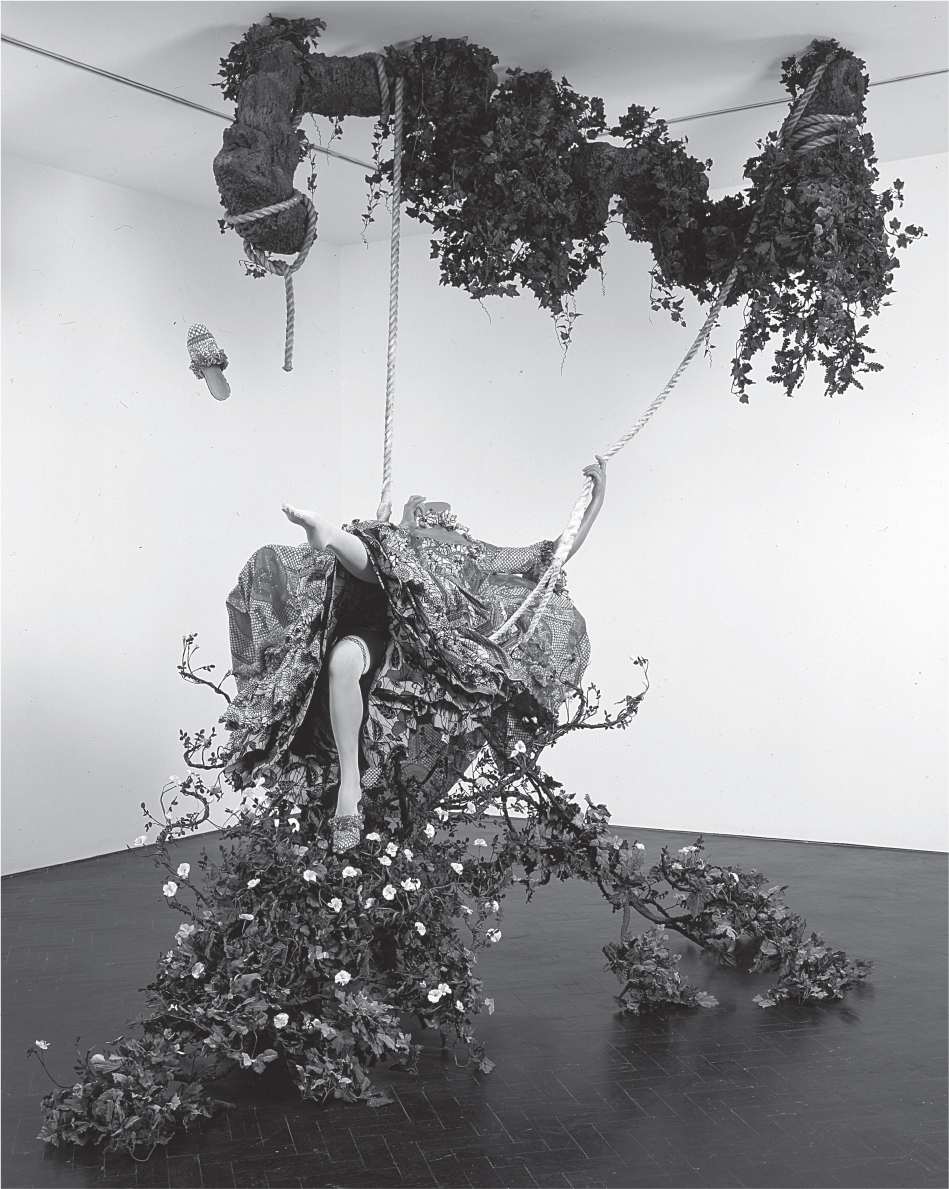
Figure 29.22: Yinka Shonibare, The Swing (after Fragonard), 2001, mixed-media installation, Tate, London
Yinka Shonibare, The Swing (after Fragonard), 2001, mixed-media installation, Tate, London (Figure 29.22)
Interpretation
■The artist was inspired by Fragonard’s The Swing (Figure 19.1).
■This work is a life-size headless mannequin.
■The dress is made of Dutch wax fabric, sold in Africa: it references global trade and postcolonial life in Africa.
■Flowering vines are cast to the floor.
■A headless figure: guillotined by the French Revolution.
Context
■Yinka Shonibare was British born, but of Nigerian descent; he lives and works in London.
■Two men in the Fragonard painting are not included; the audience takes the place of the men; erotic voyeurism.
Content Area Global Contemporary, Image 244
Artist’s Website http://www.yinkashonibarembe.com/
■Cross-Cultural Comparisons for Essay Question 1: Depicting Motion
–Muybridge, The Horse in Motion (Figure 21.5)
–Alexander Mosaic (Figure 4.20)
–Rodin, The Burghers of Calais (Figure 21.15)
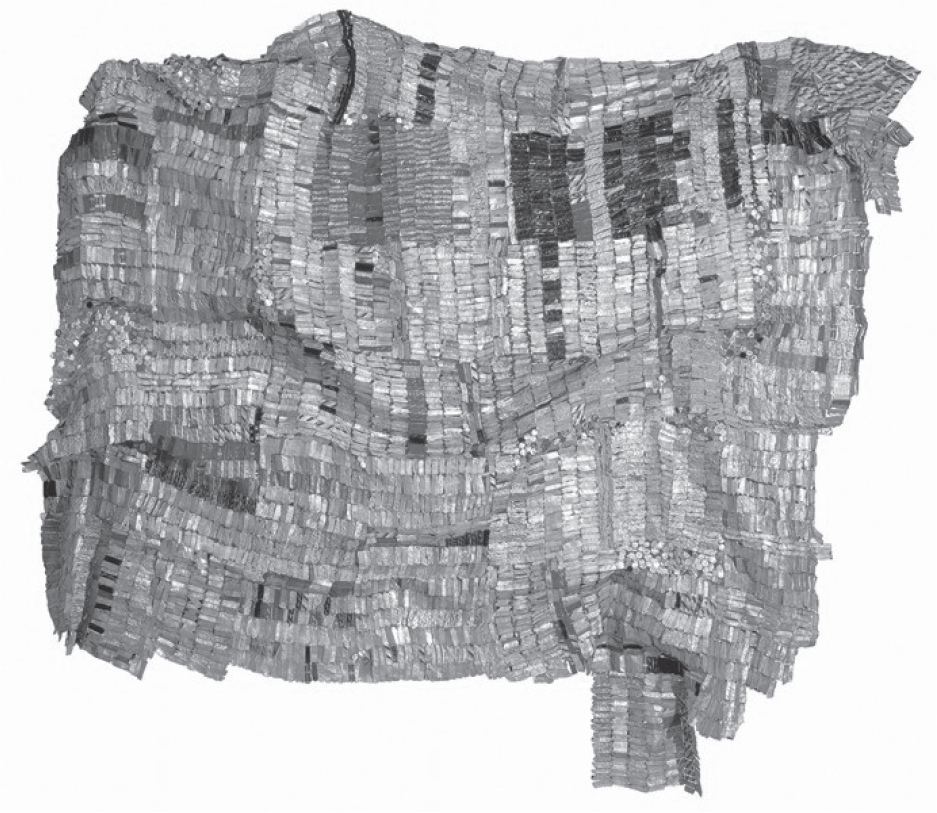
Figure 29.23: El Anatsui, Old Man’s Cloth, 2003, aluminum and copper wire, Harn Museum of Art, Gainsville, Florida
El Anatsui, Old Man’s Cloth, 2003, aluminum and copper wire, Harn Museum of Art, Gainsville, Florida (Figure 29.23)
Technique and Materials
■One thousand drink tops are joined by wire to form a cloth-like hanging.
■Bottle caps are from a distillery in Nigeria.
■The artist uses power tools such as chain saws and welding torches.
■The artist converts found materials into a new type of media that lies somewhere between painting and sculpture.
■Recycling of found objects.
Form
■The work is not flat, but hung as cloth.
■Curators are often left to hanging El Anatsui’s work to the best advantage; the work appears slightly different in each setting.
Context
■El Anatsui was born in Ghana; spent much of his career in Nigeria.
■The artist produces colorful, textured wall hangings related to West African textiles.
■The gold color reflects traditional cloth colors of Ghana and references royalty.
■The gold also symbolizes Ashanti control over the gold trade in Africa.
■El Anatsui combines aesthetic traditions of his home country of Ghana, his adapted country of Nigeria, and the global art movement of abstract art.
Content Area Global Contemporary, Image 245
Web Source http://www.jackshainman.com/artists/el-anatsui/
■Cross-Cultural Comparisons for Essay Question 1: Cloth
–All-T’oqapu tunic (Figure 26.10)
–Hiapo (Figure 28.6)
–Funeral banner of Lady Dai (Figure 24.4)
Julie Mehretu, Stadia II, 2004, ink and acrylic on canvas, Carnegie Museum of Art, Pittsburgh (Figure 29.24)
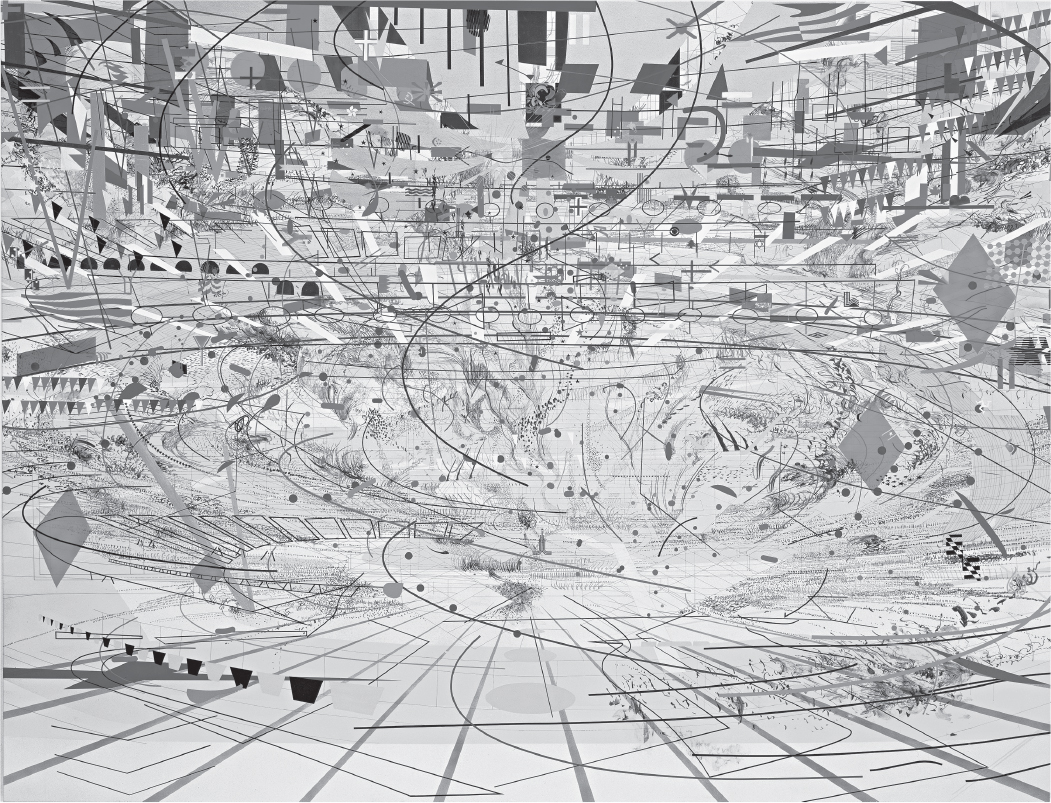
Figure 29.24: Julie Mehretu, Stadia II, 2004, ink and acrylic on canvas, Carnegie Museum of Art, Pittsburgh
Form
■This work depicts a stylized rendering of stadium architecture.
■The forms suggest the excitement, almost frenzy, of a competition held in a circular space surrounded by international images.
■Dynamic competition is suggested in sweeping lines that create a vibrant pulse.
■The work uses multilayered lines to create animation.
■Sweeping lines create depth; the focus of attention is around a central core from which colors, icons, flags, and symbols resonate.
Context
■Julie Mehretu was born in Ethiopia; she lives and works in New York City.
■She paints large-scale paintings.
■Although the paintings are done with abstract elements, the titles allude to their meaning.
■Flags can represent, in a positive or negative way, national pride, patriotism, or nationalism.
■Cf. Kandinsky’s abstractions (Figure 22.2).
Content Area Global Contemporary, Image 246
Web Source http://www.art21.org/artists/julie-mehretu
■Cross-Cultural Comparisons for Essay Question 1: Images of Entertainment
–The Colosseum (Figures 6.8a, 6.8b)
–Seated boxer (Figure 4.10)
–Basquiat, Horn Players (Figure 29.5)
Wangechi Mutu, Preying Mantra, 2006, mixed media on Mylar, Brooklyn Museum, Brooklyn, New York (Figure 29.25)
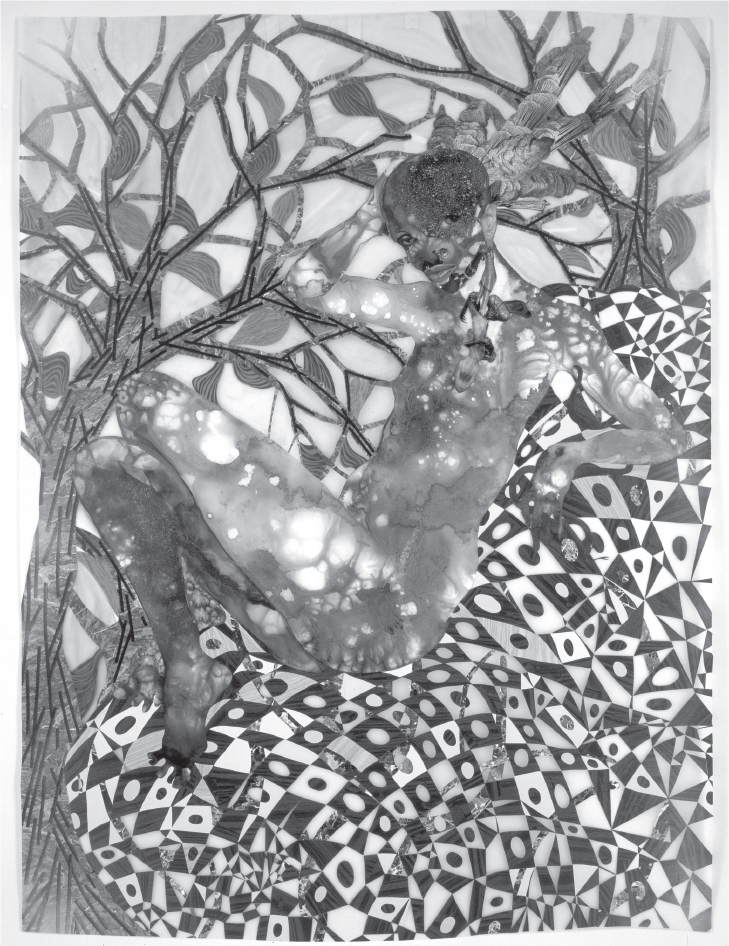
Figure 29.25: Wangechi Mutu, Preying Mantra, 2006, mixed media on Mylar, Brooklyn Museum, Brooklyn, New York
Form and Content
■Collaged female figure composed of human and animal parts, objects, and machine parts.
■She reclines in a relaxed position.
■A green snake interlocks with her fingers; bird feathers appear on the back of her head.
■Her left earlobe has chicken feet, insect legs, and pinchers.
■She has blotched skin.
Context
■Wangechi Mutu is a Kenya-born, New York–based artist.
■Art related to Afro-Futurism.
■Cyborg: a person whose function is aided by a mechanical device or whose powers are enhanced by computer implants.
■The work is a commentary on the female persona in art history.
■Ironic twist on the praying mantis:
–Suggests religious rituals.
–Mantis means “prophet” in Greek.
–Insects use camouflage; this figure seems camouflaged.
–Her seemingly contradictory roles seem to express “prey” and “preying” at the same time.
Content Area Global Contemporary, Image 247
Web Source https://gladstonegallery.com/artist/wangechi-mutu
■Cross-Cultural Comparisons for Essay Question 1: Female Form
–Kneeling statue of Hatshepsut (Figure 3.9b)
–Peplos Kore (Figure 4.2)
–Manet, Olympia (Figure 21.3)
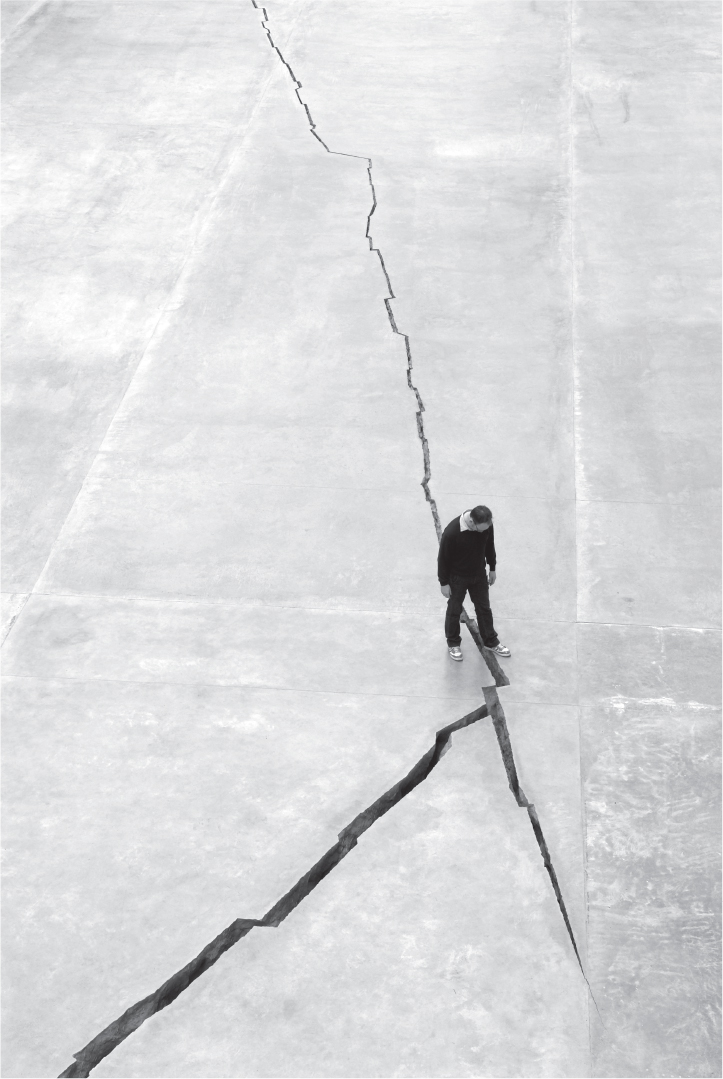
Figure 29.26: Doris Salcedo, Shibboleth, 2007–2008, installation, Tate Modern, London
Doris Salcedo, Shibboleth, 2007–2008, installation, Tate Modern, London (Figure 29.26)
Form
■This is an installation that features a large crack that begins as a hairline and then widens to two feet in depth.
■The floor of the museum was opened and a cast of Colombian rock faces was inserted.
■The work stresses the interaction between sculpture and space.
Context
■Doris Salcedo is a Colombian sculptor.
■Shibboleth: a word or custom that a person not familiar with a language may mispronounce; used to identify foreigners or people of another class.
■A shibboleth is used to exclude people from joining a group.
■Bible source: Judges 12:6: “They said, ‘All right, say Shibboleth.’ If he said, ‘Sibboleth,’ because he could not pronounce the word correctly, they seized him and killed him at the fords of the Jordan. Forty-two thousand Ephraimites were killed at that time.”
■The crack emphasizes the gap in relationships.
■The work references racism and colonialism; keeping people away or separating them.
■The installation is now sealed, but it exists as a scar; it commemorates the lives of the underclasses.
Artist’s words: “It represents borders, the experience of immigrants, the experience of segregation, the experience of racial hatred. It is the experience of a Third World person coming into the heart of Europe. For example, the space which illegal immigrants occupy is a negative space. And so this piece is a negative space.”
Content Area Global Contemporary, Image 248
Web Source http://www.art21.org/artists/doris-salcedo
■Cross-Cultural Comparisons for Essay Question 1: Works on the Ground
–Smithson, Spiral Jetty (Figure 22.26)
–Great Serpent Mound (Figure 26.4)
–Weiwei, Sunflower Seeds (Figure 29.27)
Ai Weiwei, Kui Hua Zi (Sunflower Seeds), 2010–2011, sculpted and painted porcelain, Tate Modern, London (Figure 29.27)
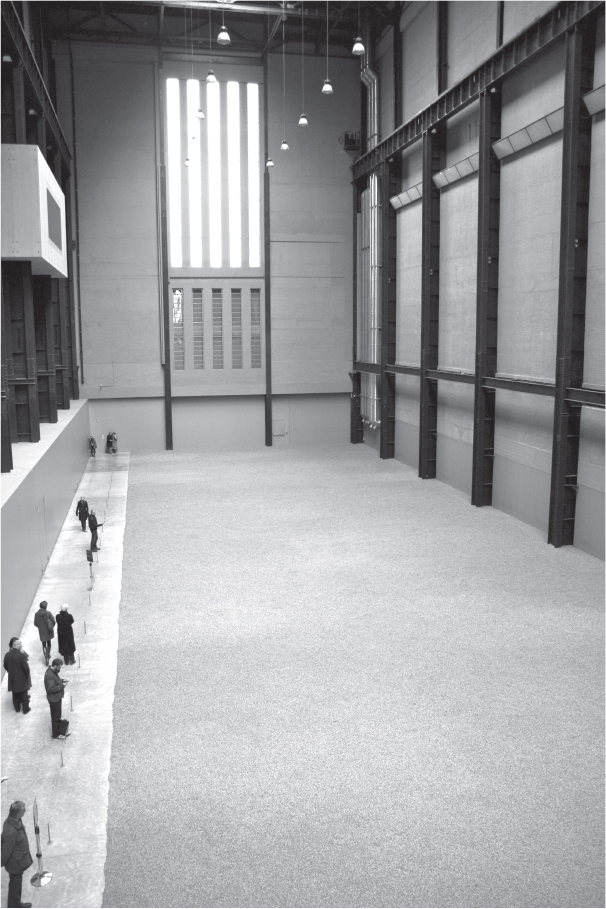
Figure 29.27: Ai Weiwei, Kui Hua Zi (Sunflower Seeds), 2010–2011, sculpted and painted porcelain, Tate Modern, London
Form and Content
■Installation containing millions of individually handcrafted ceramic pieces resembling sunflower seeds.
■They symbolically represent an ocean of fathomless depth; each seed is made in Jingdezhen, a city known for its porcelain production in Imperial China.
■The individual seed is lost among a sea of seeds, representing the loss of individuality in the modern world.
■Six hundred artisans worked for two years; each seed is handpainted.
Context
■Ai Weiwei is a Chinese artist.
■Sunflower seeds were eaten as a source of food during the famine era under Mao Tze-tung.
■The work reflects the ideology of Chairman Mao: he was the sun; his followers were the seeds.
■Originally a viewer could walk on the installation, but it raised harmful ceramic dust; viewing was then limited to the sidelines.
Content Area Global Contemporary, Image 250
Artist’s Website http://www.aiweiwei.com/
■Cross-Cultural Comparisons for Essay Question 1: Installations
–Osorio, No Crying Allowed in the Barbershop (Figures 29.15a, 29.15b)
–Bing, A Book from the Sky (Figures 29.8a, 29.8b)
–Shonibare, The Swing (after Fragonard) (Figure 29.22)
VOCABULARY
Action painting: an abstract painting in which the artist drips or splatters paint onto a surface like a canvas in order to create his or her work (Figure 22.21)
Assemblage: a three-dimensional work made of various materials such as wood, cloth, paper, and miscellaneous objects (Figure 29.12)
Earthwork: a large outdoor work in which the earth itself is the medium (Figure 22.26)
Installation: a temporary work of art made up of assemblages created for a particular space, like an art gallery or a museum (Figure 29.22)
Kitsch: something of low quality that appeals to popular taste (Figure 29.9)
SUMMARY
Contemporary art defies categorization because artists easily adapt to new styles and artistic impulses. Therefore, movements are intense but fleeting, and influenced by current politics and culture. Minimalists designed works that show a modern predilection for clean, open, and simple forms. Site Art expresses an awareness of the surroundings a work of art may have, and insists on a mutual coexistence of the object and its environment. Awareness of feminist issues influenced not only the production of Feminist Art, but also spurred the growth of female collectors, artists, and gallery owners.
Contemporary artists have a great range of materials and venues to express themselves—perhaps more than any other time in history. Artists experiment both with new art forms and with new ideas to create a dynamic range of effects. Architecture has been particularly affected by the growth of technology, both in the planning stages by using a computer, and in the construction phases by using new types of metal and glass.
Modern art is sensitive to all contemporary issues—setting, world politics, technological advances, new techniques, and to the dynamics of the art market itself.
PRACTICE EXERCISES
Multiple-Choice
1.Kitsch can be defined as a
(A)performance art that uses music, dance, and costume
(B)three-dimensional work made of found objects
(C)temporary work made of assemblages
(D)something of low quality that appeals to popular taste
2.Song Su-nam’s Summer Trees references the
(A)Asian tradition of painting with ink
(B)Chinese tradition of painting on the scroll format
(C)Korean tradition of painting screens that separate rooms
(D)Japanese tradition of wood-block prints popular in Europe
3.Australian aboriginal artists such as Emily Kame Kngwarreye rely on their traditions for their work, while maintaining a presence in the contemporary global art world. Kngwarreye’s work differs from traditional Pacific art in that it
(A)has no emphasis on color
(B)does not use patterns and markings
(C)is not done for display
(D)does not have figures
4.The Vietnam Veterans Memorial is designed so that the viewer would
(A)think about the glory of war and ultimate victory
(B)descend into a grave-like setting to remember the dead
(C)commemorate the ultimate sacrifice people made to ensure peace
(D)be able to protest American involvement in foreign wars
5.The anthropomorphized human figure in Wangchi Mutu’s Preying Mantra symbolizes
(A)the ancient tradition of combining human and animal forms in a single figure as a commentary on natural selection
(B)a commentary on the depiction of females in works of art
(C)an overreliance on computers and machines rather than direct human contact
(D)the crisis in global warming and its effect on all of us
Long Essay
Practice Question 2: Visual and Contextual Analysis
Suggested Time: 25 minutes
In the contemporary world, artists often reference the past to create new works that comment on the present.
Select and completely identify a work from the contemporary world in which the artist has used past art forms in a creative new way.
In your answer, make sure to:
■Accurately identify the work you have chosen with at least two identifiers beyond those given.
■Respond to the question with an art historically defensible thesis statement.
■Support your claim with at least two examples of visual and/or contextual evidence.
■Explain how the evidence that you have supplied supports your thesis.
■Use your evidence to corroborate or modify your thesis.
A Book from the Sky
Dancing in the Louvre
Untitled #228 from the History of Portraits Series
ANSWER KEY
1.D
2.A
3.D
4.B
5.B
ANSWERS EXPLAINED
Multiple-Choice
1.(D) Kitsch can be defined as something of low quality that appeals to popular taste. Jeff Koons references kitsch in many of his works.
2.(A) Painting with ink is an Asian specialty. Su-nam’s work continues that tradition.
3.(D) Most art from the Pacific region is traditionally figural. Kngwarreye’s work is primarily abstract.
4.(B) The Vietnam Veterans Memorial is about remembering the dead, and so it is appropriate that the viewer descend into a grave-like setting to see the impact of the names as they rise above them.
5.(B) Mutu’s work Preying Mantra references depictions of females in art history such as Titian or Manet.
Long Essay Rubric
Task |
Point Value |
Key Points in a Good Response for Book from the Sky could include: |
Accurately identify the work you have chosen with at least two identifiers beyond those given. |
1 |
Xu Bing, 1987–1989, mixed-media installation |
Respond to the question with an art historically defensible thesis statement. |
1 |
The thesis statement must be an art historically sound claim that responds to the question and does not merely restate it. The thesis statement should come at the beginning of the argument and be at least one, preferably two sentences. For example: A Book from the Sky references historically linked Chinese art forms including scrolls, wood-block printings, and screens. However, these techniques are combined and used in an innovative way. |
Support your claim with at least two examples of visual and/or contextual evidence. |
2 |
Two visual or contextual examples are needed. For A Book from the Sky, evidence could involve a discussion of how the artist scripted books that look like they use ancient Chinese characters but don’t, or how Chinese screens originally were used to divide spaces but here seem to hem the viewer in. |
Explain how the evidence that you have supplied supports your thesis. |
1 |
Good responses link the evidence you have provided with the main thesis statement. With Xu Bing’s work it is important to stress how these traditional Chinese art forms would be viewed by a modern audience now that Xu Bing has made the art forms his own. |
Use your evidence to corroborate or modify your thesis. |
1 |
This point is earned when a student demonstrates a depth of understanding, in this case of Xu Bing’s work. The student must demonstrate multiple insights on a given subject. For example, a connection should be made to the political situation in China, and how Xu Bing could be commenting on that situation with his work. |
Task |
Point Value |
Key Points in a Good Response for Dancing in the Louvre could include: |
Accurately identify the work you have chosen with at least two identifiers beyond those given. |
1 |
Faith Ringgold, 1991, acrylic on canvas, tie-dyed, pieced fabric border. |
Respond to the question with an art historically defensible thesis statement. |
1 |
The thesis statement must be an art historically sound claim that responds to the question and does not merely restate it. The thesis statement should come at the beginning of the argument and be at least one, preferably two sentences. For example: Dancing in the Louvre references traditionally linked feminine art forms such as oil painting, quilting, and weaving with storytelling. Ringgold creates her own stories and illustrates them using traditional techniques in a new way. |
Support your claim with at least two examples of visual and/or contextual evidence. |
2 |
Two visual or contextual examples are needed here. For Dancing in the Louvre, evidence could involve a discussion of how the artist used oil paint to recreate the paintings by Leonardo daVinci or used quilting to tell the story narrated in the margins of the work. |
Explain how the evidence that you have supplied supports your thesis. |
1 |
Good responses link the evidence you have provided with the main thesis statement. You could show how the older techniques are used in a way that, for example, would never have been used in the past. |
Use your evidence to corroborate or modify your thesis. |
1 |
This point is earned when a student demonstrates a depth of understanding. With Ringgold’s work it is important to stress how the use of the old technique in a modern way casts a commentary on the art scene in the contemporary world dominated by males and European-based art forms. |
Task |
Point Value |
Key Points in a Good Response for Untitled #228 could include: |
Accurately identify the work you have chosen with at least two identifiers beyond those given. |
1 |
Cindy Sherman, 1990, photograph |
Respond to the question with an art historically defensible thesis statement. |
1 |
The thesis statement must be an art historically sound claim that responds to the question and does not merely restate it. The thesis statement should come at the beginning of the argument and be at least one, preferably two sentences. For example: Untitled #228 references a traditional subject from the Bible as well as traditional European painting, with a modern photographic process. The appropriation of traditional material onto a modern context makes for an innovative commentary on contemporary gender and identity issues. |
Support your claim with at least two examples of visual and/or contextual evidence. |
2 |
Two visual or contextual examples are needed here. For Untitled #228 evidence could involve a discussion of how the artist represented the Old Testament figure of Judith decapitating Holofernes with both typical iconography and a new way of representing the figures. |
Explain how the evidence that you have supplied supports your thesis. |
1 |
Good responses link the evidence you have provided with the main thesis statement. The students should link the Biblical subject matter with the photographic process, stressing what the photograph can achieve that a painting does not. |
Use your evidence to corroborate or modify your thesis. |
1 |
This point is earned when a student demonstrates a depth of understanding, in this case of Sherman’s work. The artist raises questions about gender, identity, and society through her work, as can be seen here. |